Sunroom dining rooms blend the warmth of natural light with the comfort of an indoor dining experience. Key design strategies include maximizing daylight with strategic window placement, choosing moisture-resistant and stylish flooring, and selecting furniture that compliments the airy, open feel. Incorporating greenery and natural materials—such as wicker, rattan, or reclaimed wood—enhances the connection to the outdoors, while varied textures and layered lighting create depth and ambiance. Versatile layouts and multifunctional furniture ensure the space accommodates everything from casual family breakfasts to elegant dinner parties. Seasonal accents and personalized decor items add charm and make the sunroom dining area a welcoming focal point year-round.
1. Maximizing Natural Light
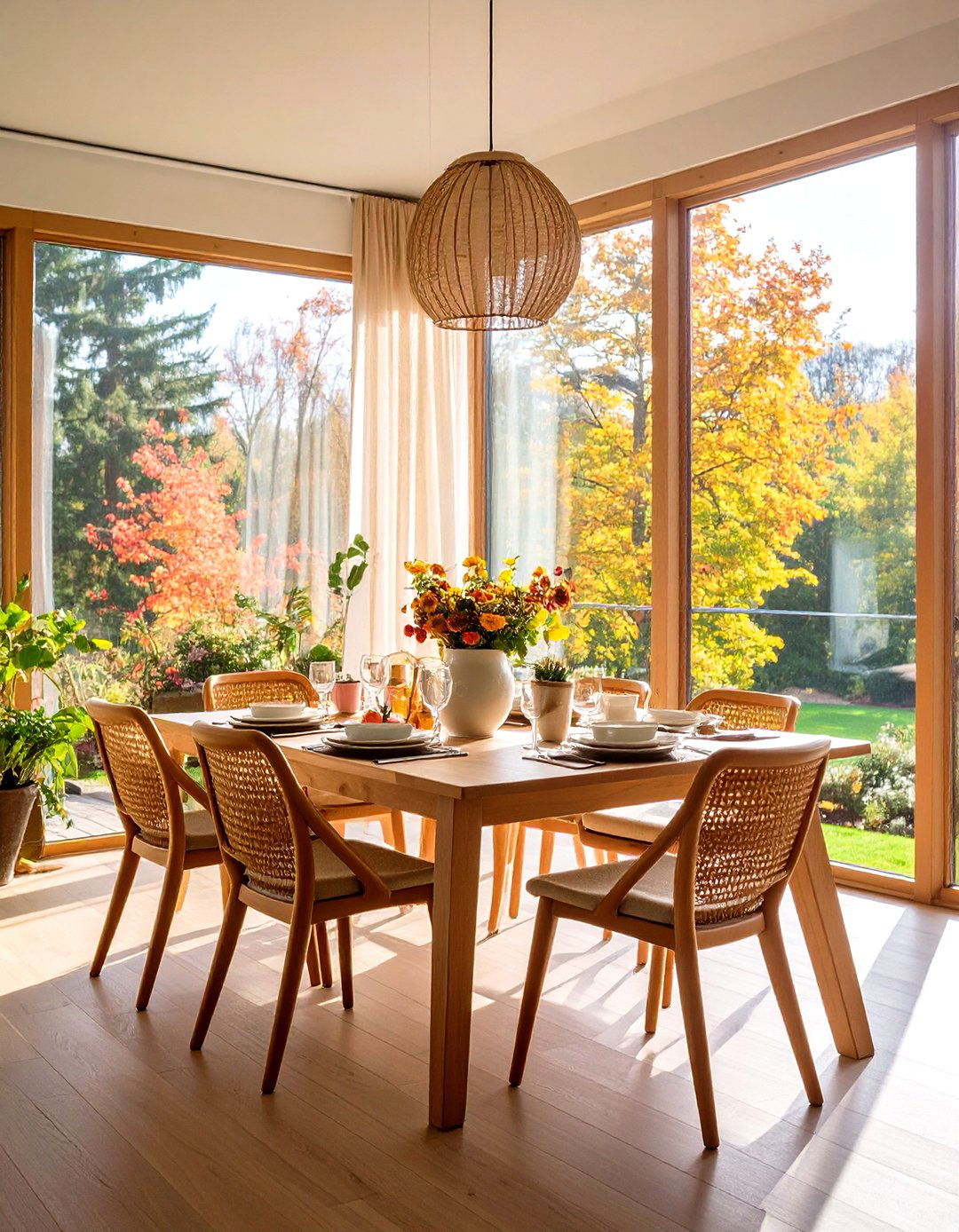
Positioning the dining area to capture the most sunlight is the foundation of any successful sunroom design. Floor-to-ceiling windows or glass walls allow for uninterrupted views and an abundance of daylight, reducing the need for artificial lighting during the day. For additional brightness, consider skylights or clerestory windows that channel light deeper into the room. To prevent glare while preserving illumination, opt for adjustable UV-filtering blinds or sheer curtains. This balance creates an inviting, luminous atmosphere perfect for meals and social gatherings.
2. Choosing the Right Flooring
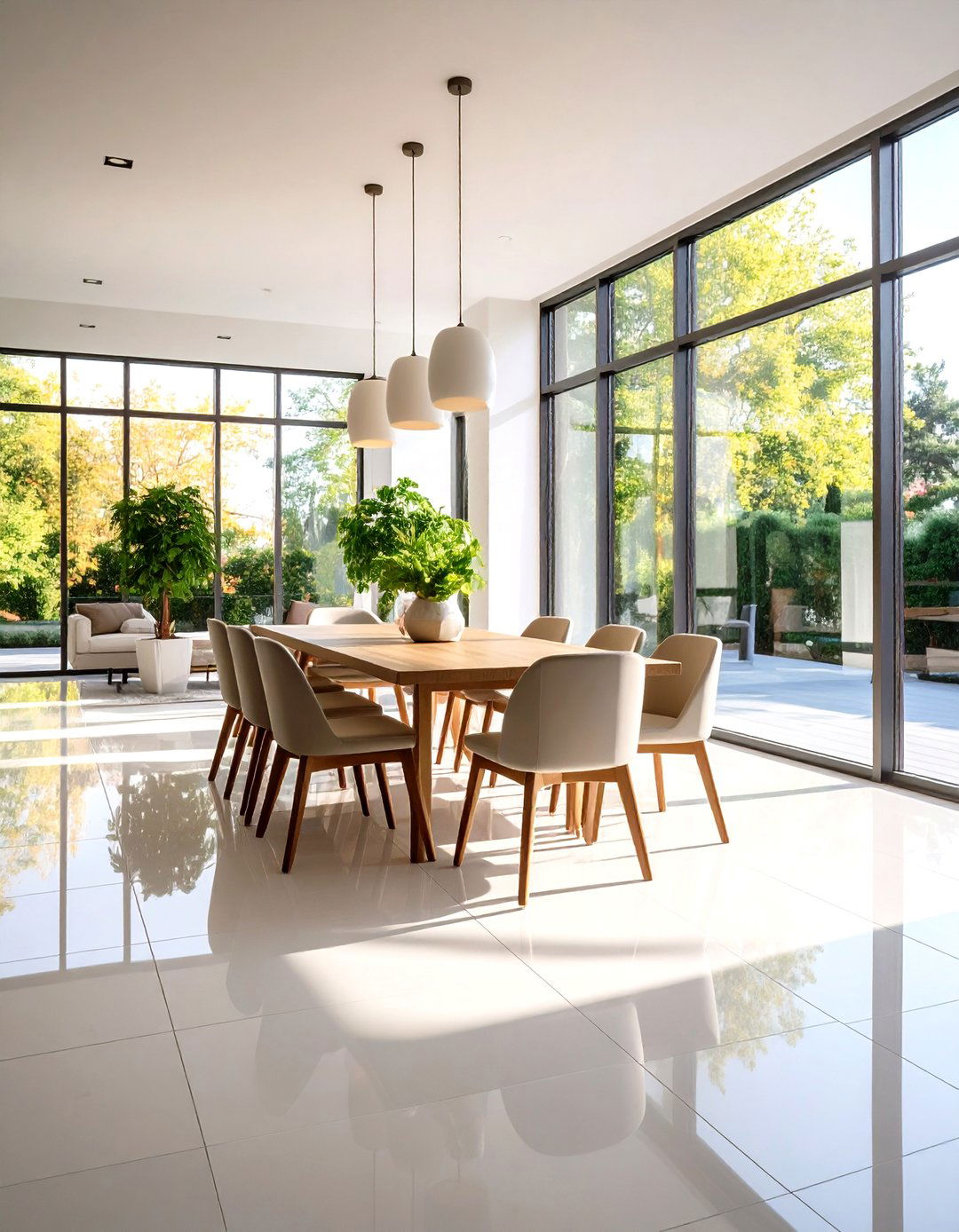
Sunrooms often face fluctuating temperatures and moisture, so selecting durable, moisture-resistant flooring is crucial. Porcelain tile remains a popular choice for its water resistance and easy maintenance. For a warmer feel, engineered hardwood designed for sunroom use provides the look of real wood with added stability against humidity. Woven vinyl or composite decking tiles offer a casual, weatherproof solution that mimics natural fibers like seagrass or wicker. Adding an outdoor-grade rug under the dining table can define the space and introduce softness underfoot.
3. Indoor-Outdoor Fusion

Blurring the line between indoors and outdoors enhances a sunroom’s appeal. Seamless transitions—such as a sliding glass or bi-fold door connecting the dining area to a patio—facilitate easy indoor-outdoor entertaining. Matching flooring materials on both sides of the threshold reinforces this continuity. Incorporate outdoor-approved furniture pieces alongside indoor accents; for example, pair a weather-resistant metal table with cushioned chairs upholstered in UV-resistant fabric. Potted plants and water features further strengthen the outdoor ambiance, creating a tranquil setting for meals.
4. Color Palette Selection
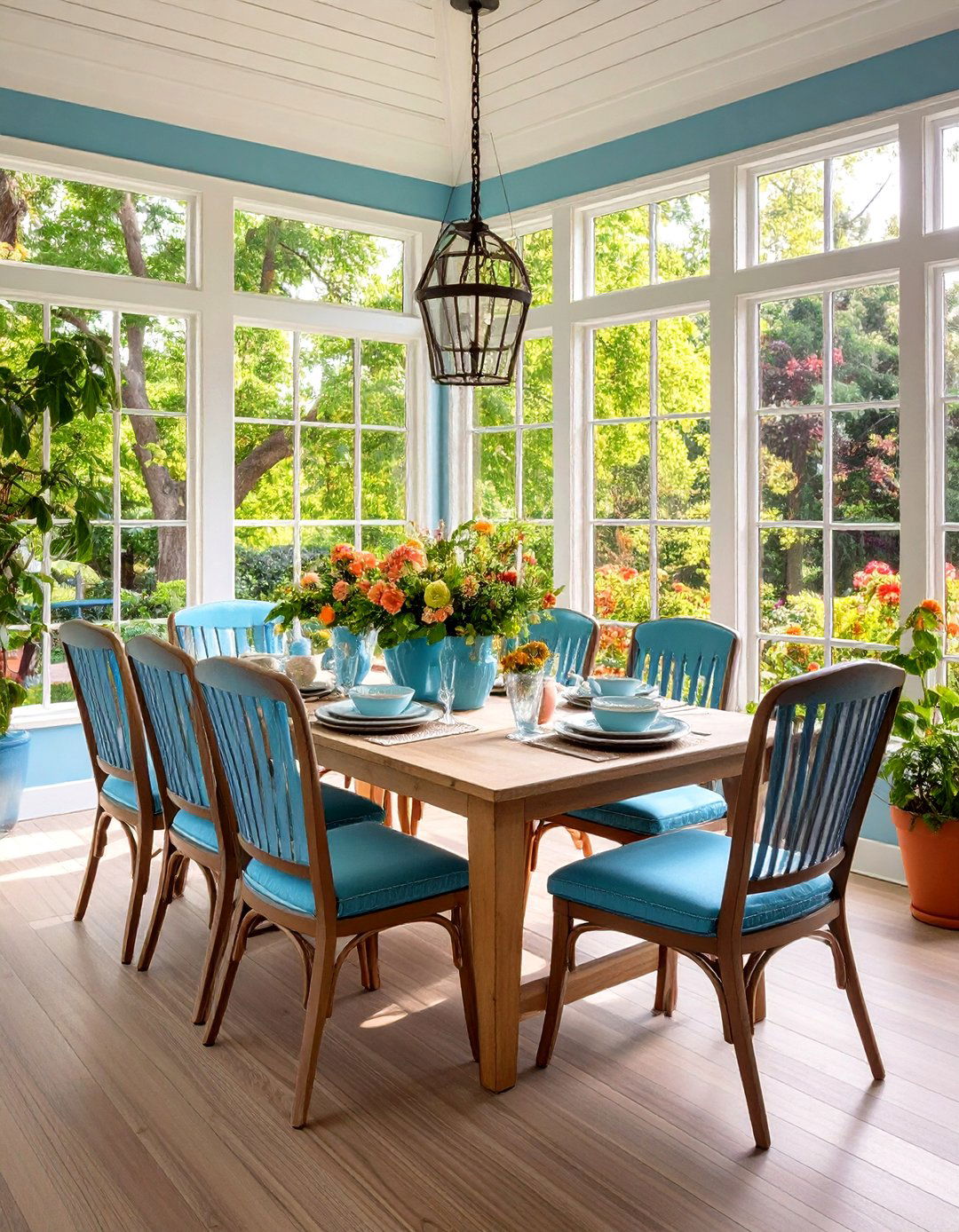
Neutral and light color palettes amplify the airy vibe of a sunroom dining space. Shades of white, cream, and pale gray reflect sunlight, making the room feel larger and brighter. To introduce warmth, incorporate soft blues or sage greens that echo outdoor landscapes. Accent colors—like terracotta or muted coral—can be added through table linens, decorative throw pillows, or artwork. For a bolder statement, a single accent wall painted in a saturated hue creates depth without overpowering the serene atmosphere.
5. Furnishing with Sleek, Lightweight Pieces
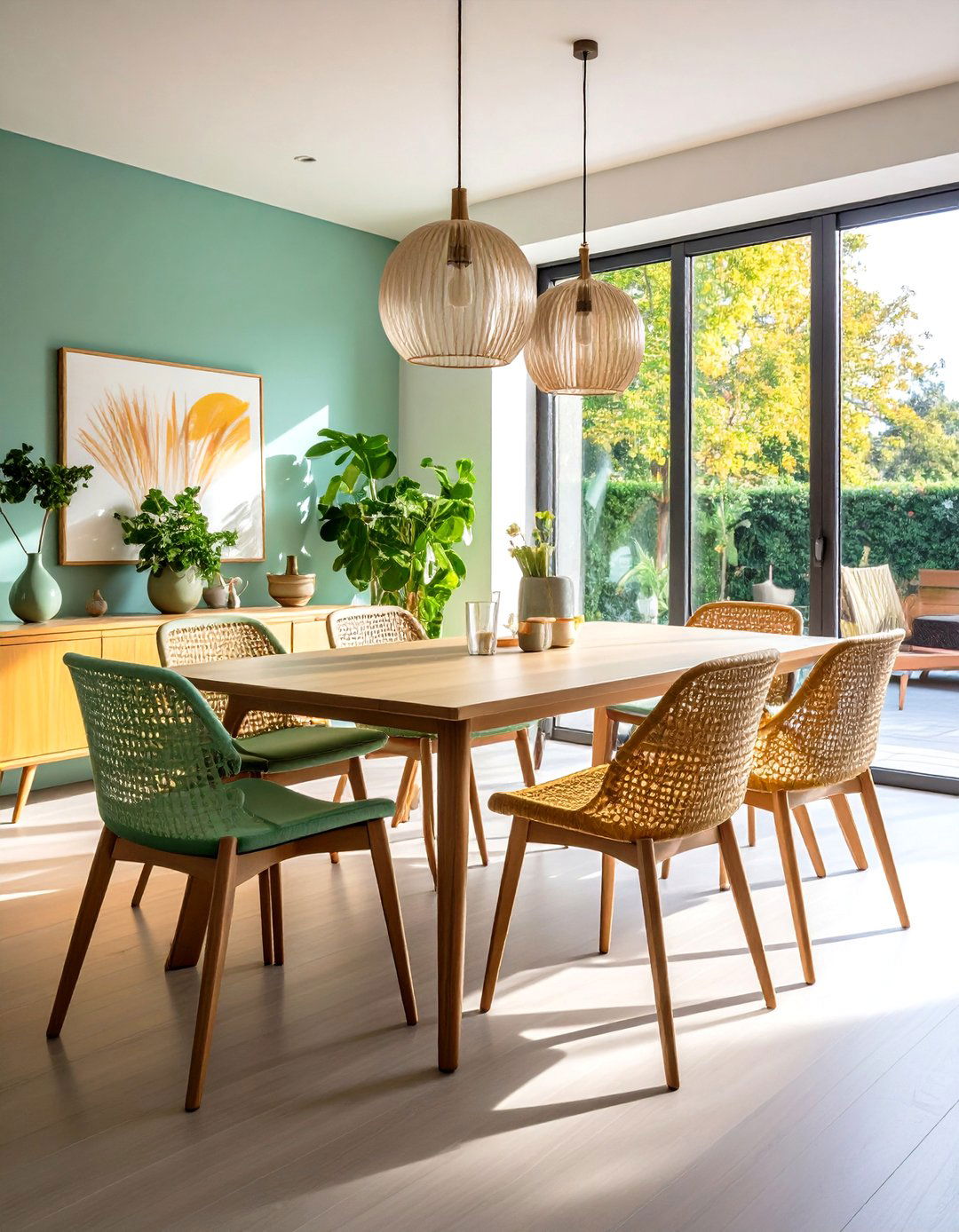
Opt for furniture that complements the open feel of a sunroom without overwhelming the space. Slim-legged tables and transparent acrylic or glass-topped surfaces maintain visual lightness. Stackable or folding chairs allow for flexible seating arrangements and easy storage when not in use. Natural materials—such as rattan, wicker, or bamboo—bring texture and organic warmth while remaining lightweight. Cushioned bench seating along one wall can save space and add a cozy, communal vibe to the dining setup.
6. Incorporating Greenery
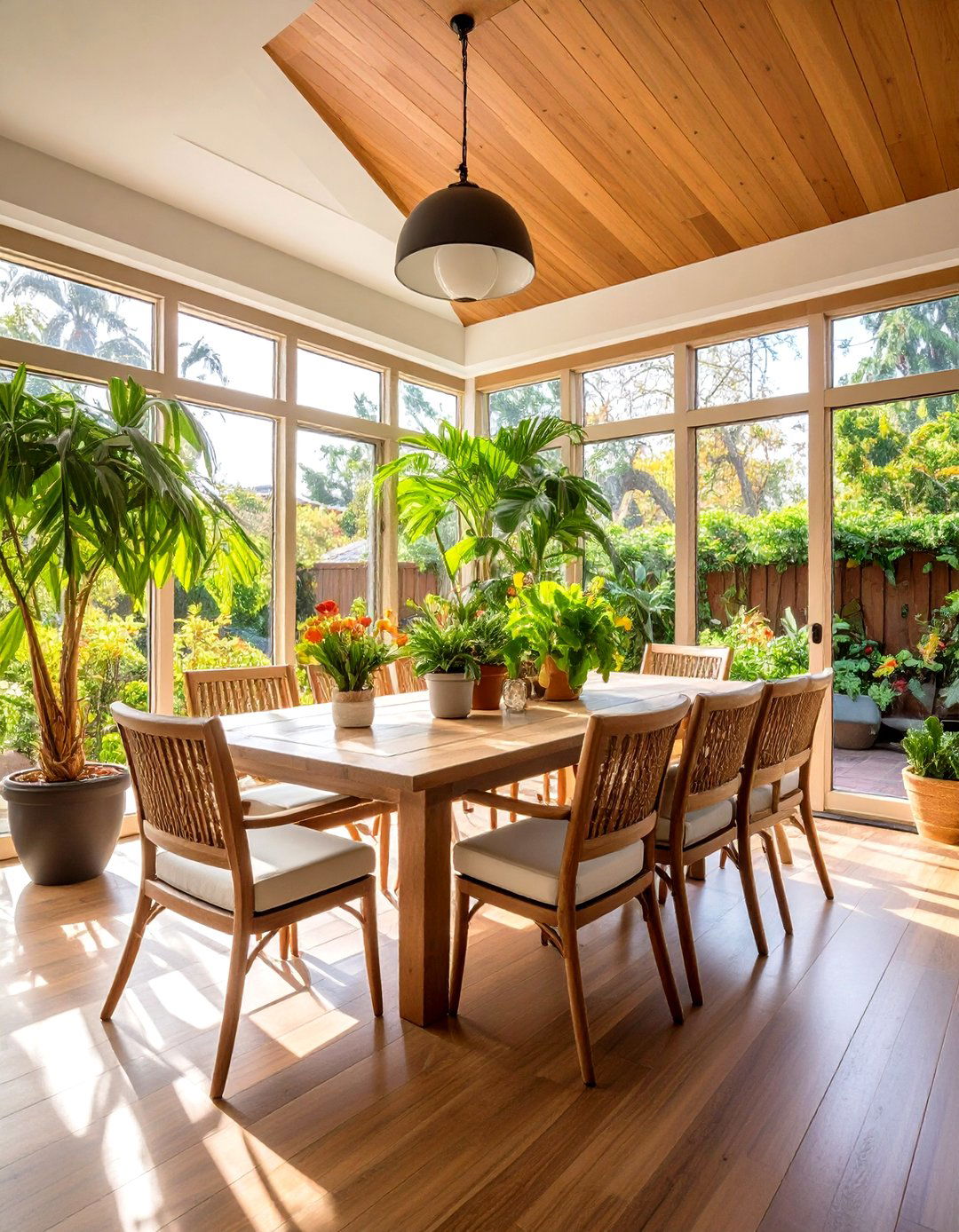
Plants are essential for a sunroom, reinforcing its connection to nature. Large potted palms, fiddle-leaf figs, or bird of paradise plants thrive in bright conditions and frame the dining area with lush foliage. Smaller herbs or succulents grouped on a windowsill make functional décor—perfect for seasoning dishes fresh off the table. Hanging planters add dimension without consuming floor space, and a living wall or vertical garden becomes a dramatic backdrop for the dining table.
7. Multifunctional Furniture Layouts

Flexibility in furniture layout maximizes usability. A dining table on casters can roll away to convert the space into a lounge or yoga area when not in use. Extendable tables accommodate varying guest counts, while nestable side tables offer extra surface area when needed. Incorporate built-in banquettes with hidden storage beneath the seats for stashing tablecloths, cushions, or seasonal décor. This adaptability ensures the sunroom dining area remains both practical and inviting.
8. Window Treatments and Blinds
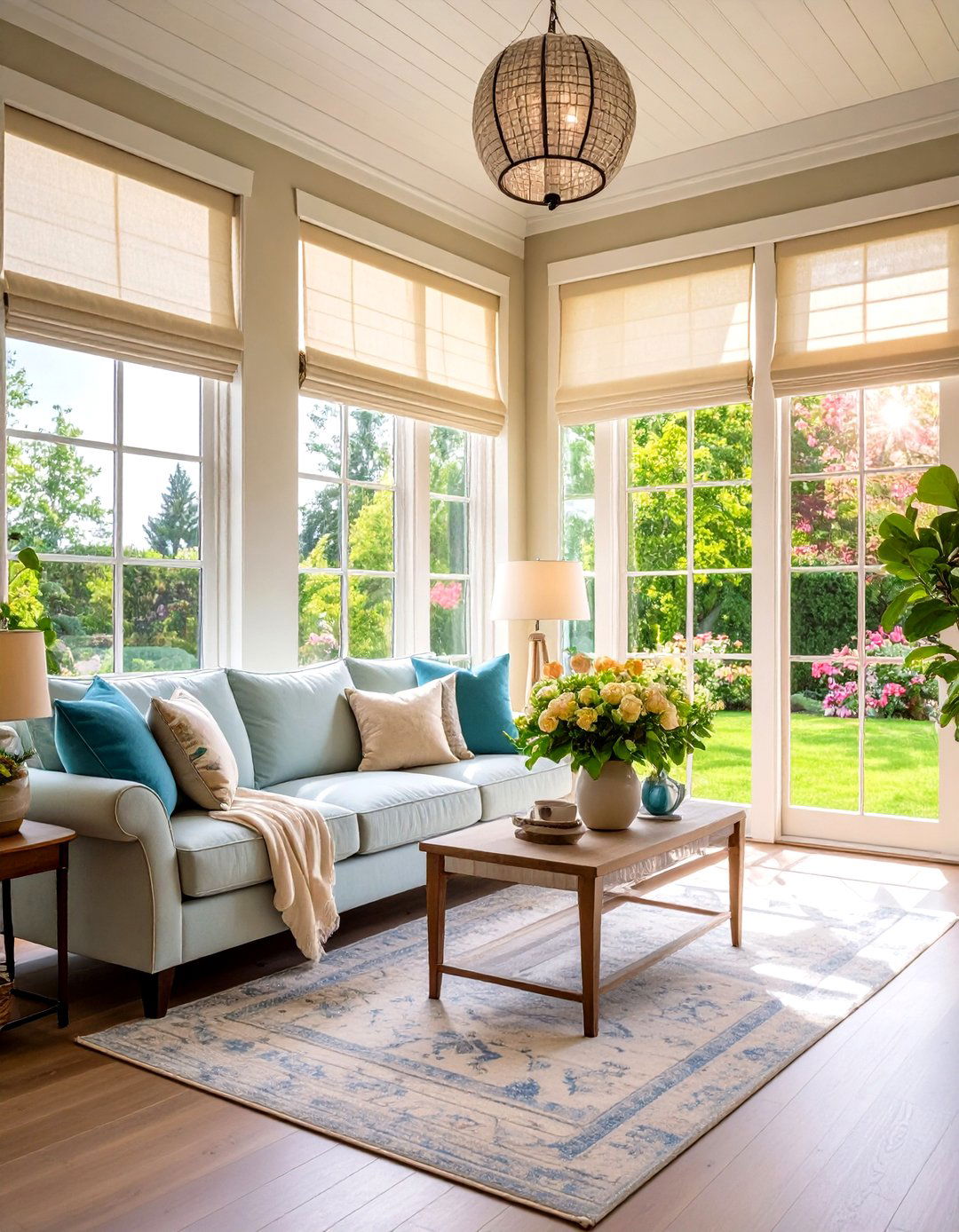
While light is a gift, controlling heat and glare is essential. Cellular shades provide insulation and light diffusion, helping regulate temperature year-round. Roman shades in moisture-resistant fabrics offer a tailored look and can be lined with blackout materials for evening privacy. For a softer aesthetic, sheer curtains sway gently in a breeze and soften incoming light. Automated motorized treatments add convenience, allowing you to adjust light levels with a remote or smart home system.
9. Mixing Textures and Materials
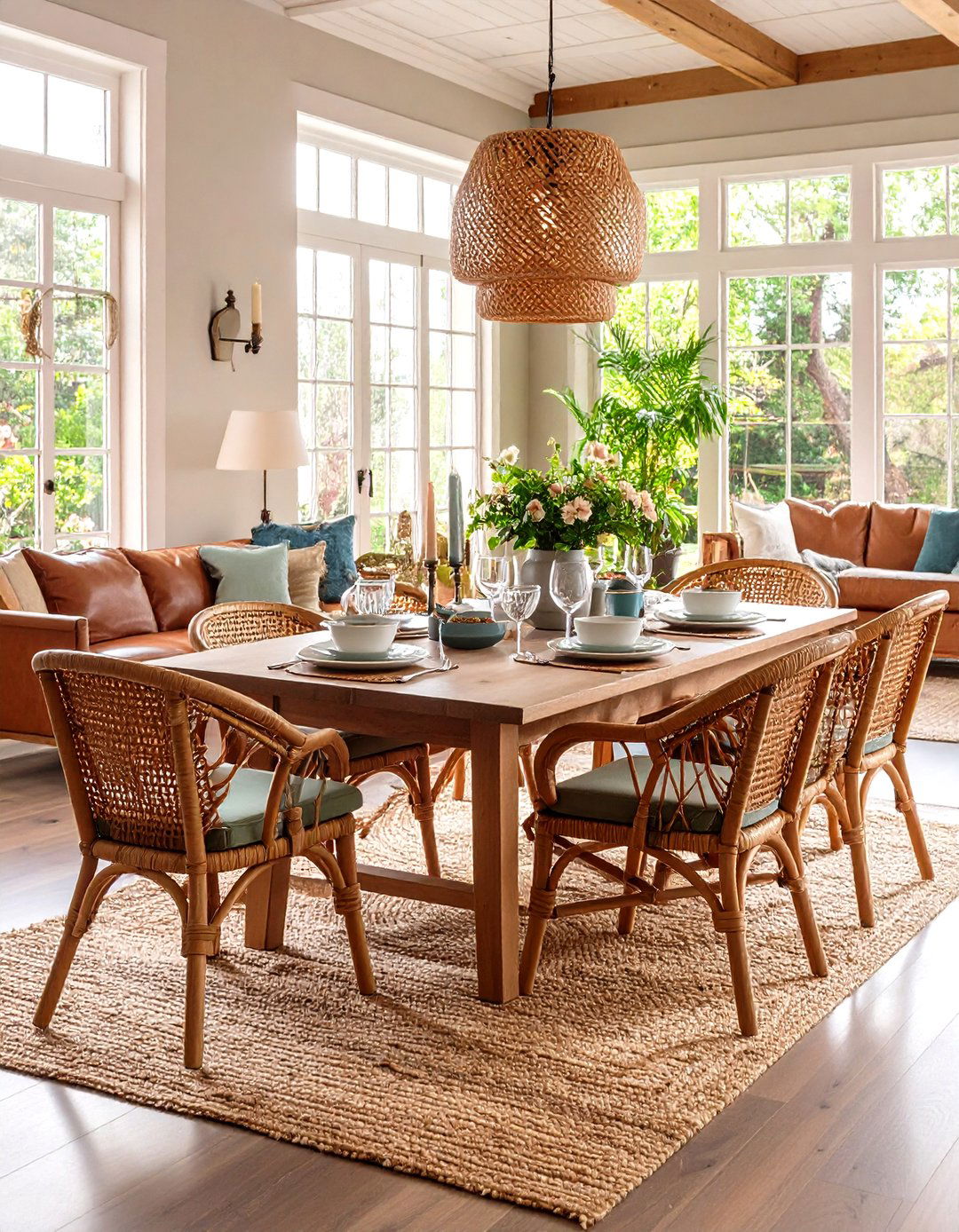
Layering diverse textures creates visual interest. Pair smooth glass tabletops with woven rattan chairs and a chunky jute rug for contrast. Leather-upholstered seating adds sophistication, while a reclaimed wood buffet introduces rustic character. Metal accents—like a brass chandelier or steel-frame shelving—inject an industrial edge. Incorporate textiles such as linen table runners, cotton napkins, and knitted poufs to soften hard surfaces and invite tactile exploration.
10. Vintage and Rustic Accents
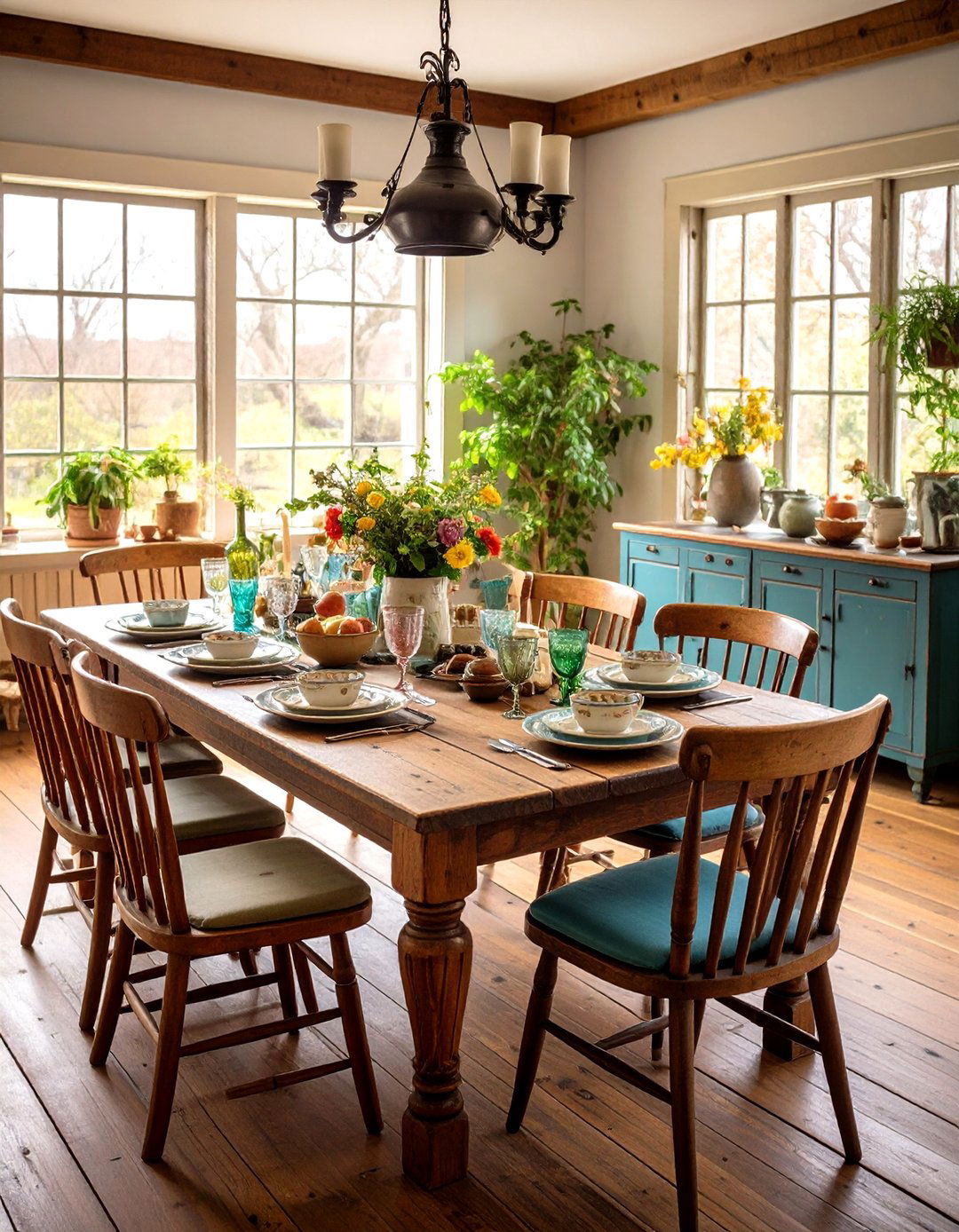
Rustic elements add warmth and personality. A farmhouse-style wooden trestle table anchors the dining area with timeless charm. Distressed sideboards or antique hutches display dishes and glassware while providing storage. Vintage glassware, mismatched china, and heirloom textiles add character and tell a story across every meal. Consider repurposing old windows as wall art or using reclaimed doors as a tabletop for a one-of-a-kind focal point.
11. Contemporary Minimalism
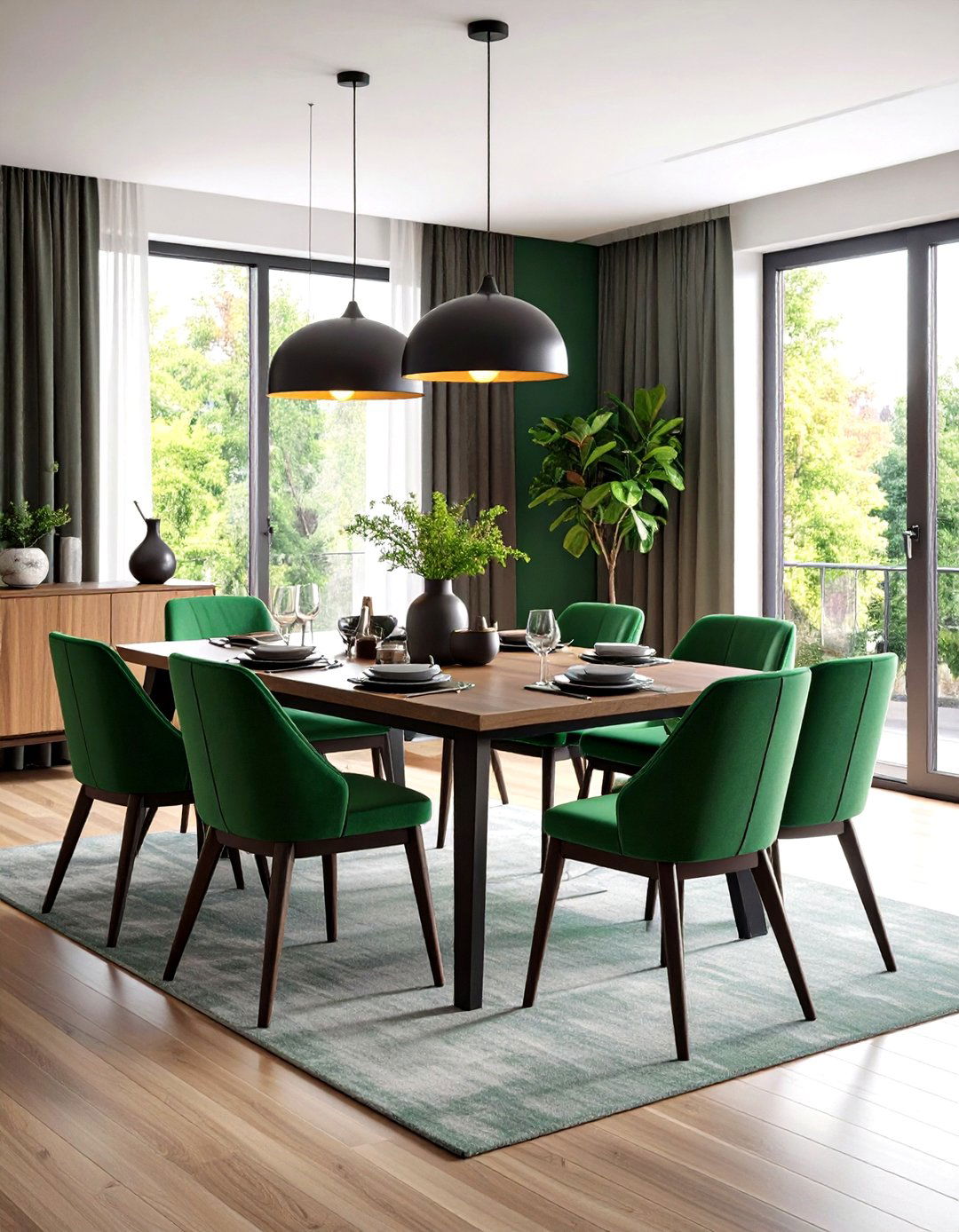
For a sleek, modern look, embrace minimalism. Choose a streamlined dining table with clean lines and pair it with low-profile chairs in monochromatic hues. Keep accessories to a minimum—a single sculptural vase or a geometric centerpiece ensures the view outside remains the star. Polished concrete or resin flooring reinforces the minimalist aesthetic while offering durability. A single statement light fixture—in a bold form or oversized scale—provides a focal point without clutter.
12. Coastal Chic Vibe

Infuse seaside flair with a coastal chic theme. Whitewashed wood furniture, slipcovered seating, and nautical-inspired stripes evoke beachside living. Textiles in aqua, navy, or sandy neutrals complement ocean views. Decorate with driftwood centerpieces, coral-patterned linens, and glass floats or lanterns. Incorporate woven baskets and rope accents to complete the look. This breezy style transforms the sunroom into a casual, breezy retreat where every meal feels like a vacation.
13. Bohemian Eclectic Style
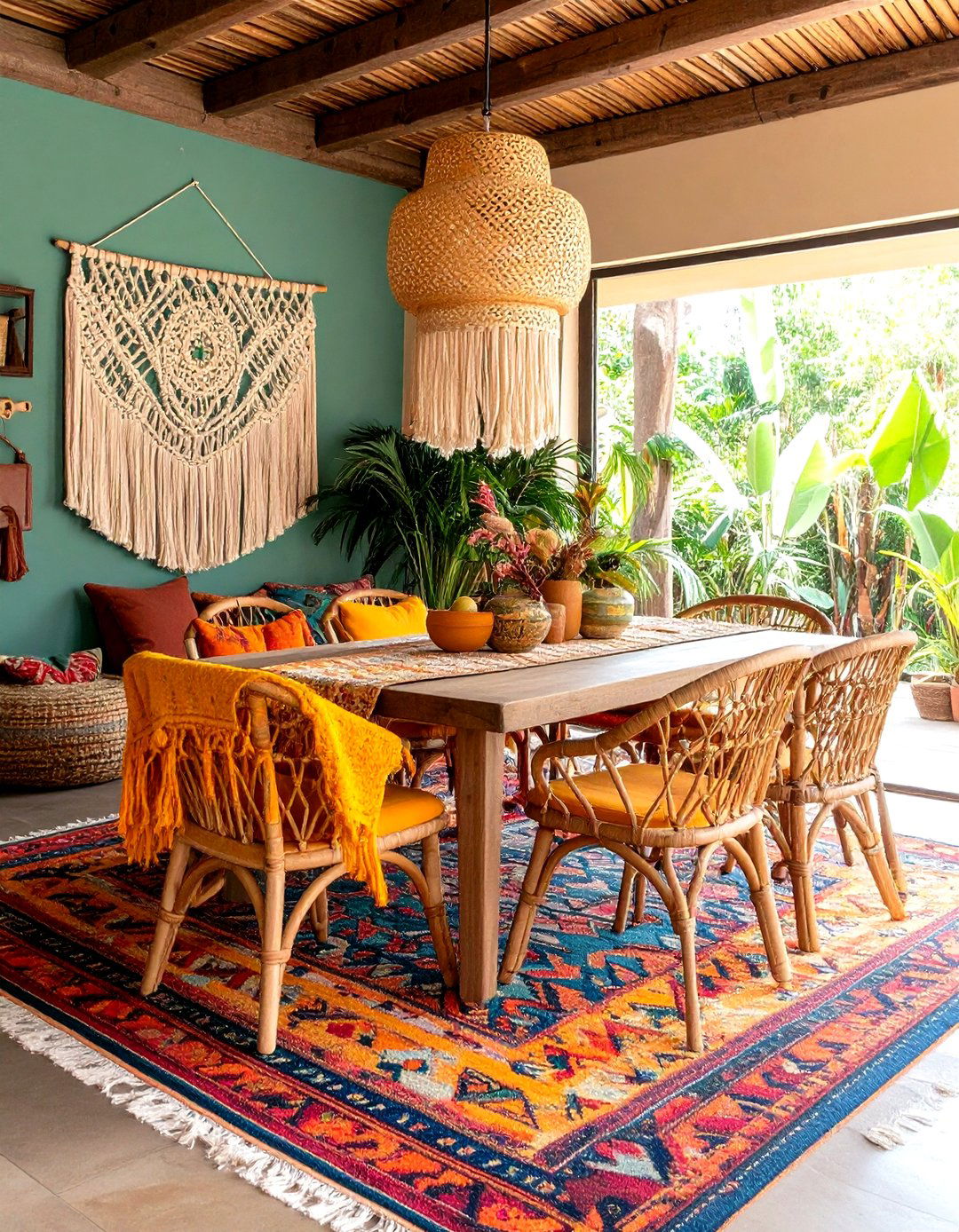
A bohemian sunroom dining area bursts with color, pattern, and global influences. Layer vibrant rugs beneath the table, and mix patterned cushions on mismatched chairs. Macramé wall hangings, tassel garlands, and beaded chandeliers add a handcrafted aesthetic. Incorporate vintage textiles—like kilim runners or ikat pillows—for a worldly vibe. Houseplants in decorative pots fill corners, while an assortment of candles and lanterns creates a warm, inviting glow for evening gatherings.
14. Industrial Edge
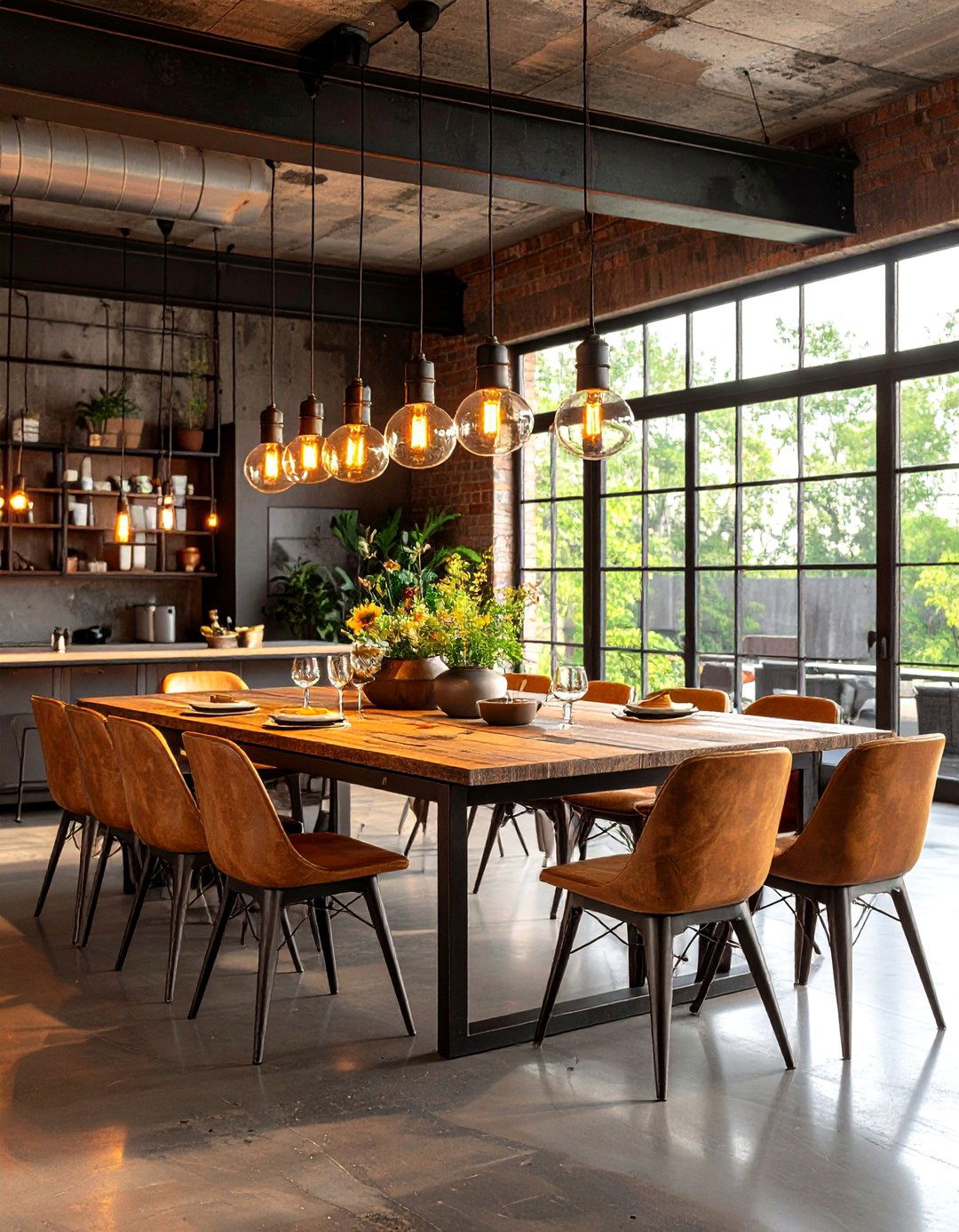
Combine raw materials for an industrial-inspired look. A metal-framed table with a reclaimed wood top anchors the space in urban coolness. Exposed steel beams or brick walls enhance the loft-like feel. Pair with leather or metal dining chairs and add Edison-bulb pendant lights overhead. Concrete or dark-stained hardwood flooring provides a sturdy base. To soften the industrial aesthetic, layer in plush textiles—such as a wool rug or velvet cushions—that offer comfort without diluting the edgy vibe.
15. Warm and Cozy Farmhouse
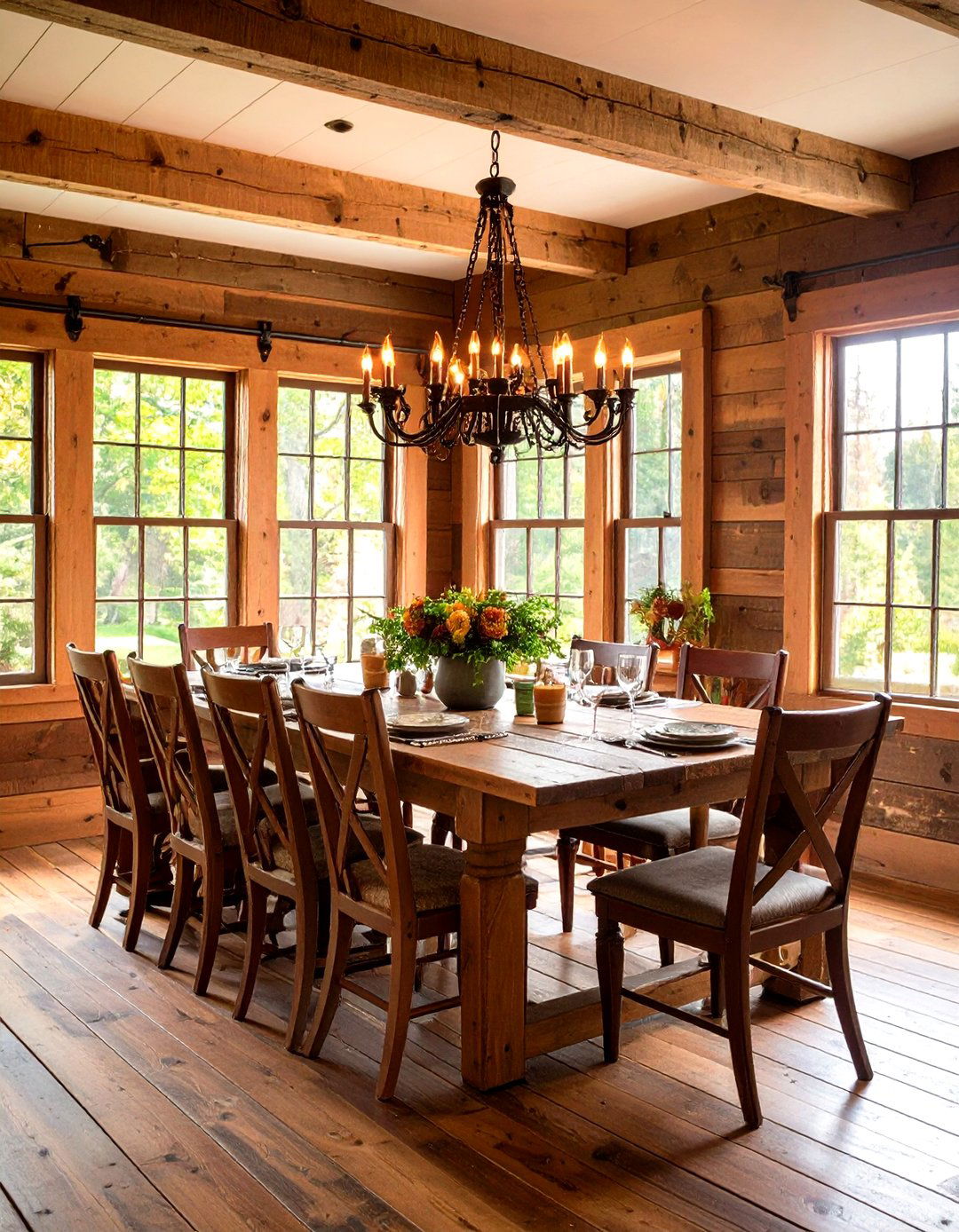
Farmhouse style brings warmth and nostalgia to a sunroom dining space. A whitewashed beadboard ceiling and shiplap walls set a charming backdrop. Opt for a countryside-inspired trestle table surrounded by ladder-back chairs. Display mason jars filled with wildflowers as centerpieces, and hang a wrought-iron chandelier above the table for rustic elegance. Soft textiles—like plaid throws or gingham table linens—enhance the homely ambiance. Mixing wood tones with white finishes keeps the space bright and inviting.
16. Modern Glass and Metal
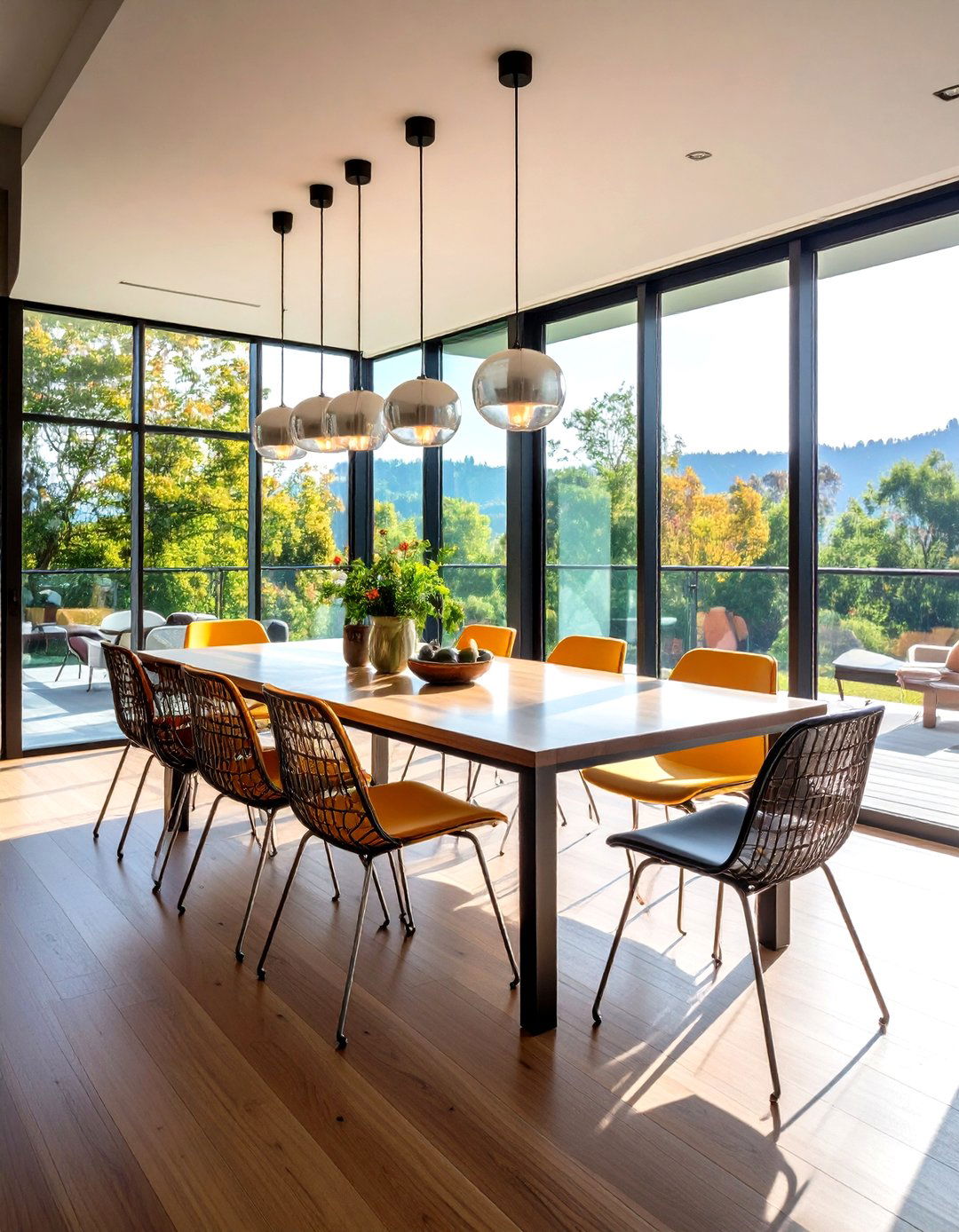
A sleek, contemporary sunroom dining room can lean into all-glass surfaces and metal accents. A fully glazed wall system eliminates barriers between inside and out, while frameless glass doors slide open for a seamless indoor-outdoor connection. Pair with a minimalist glass table supported by a stainless steel base. Metal mesh chairs or wireframe seating introduce visual interest without blocking views. For a luxe touch, incorporate chrome or polished nickel light fixtures and accessories that reflect sunlight throughout the space.
17. Layered Lighting Solutions
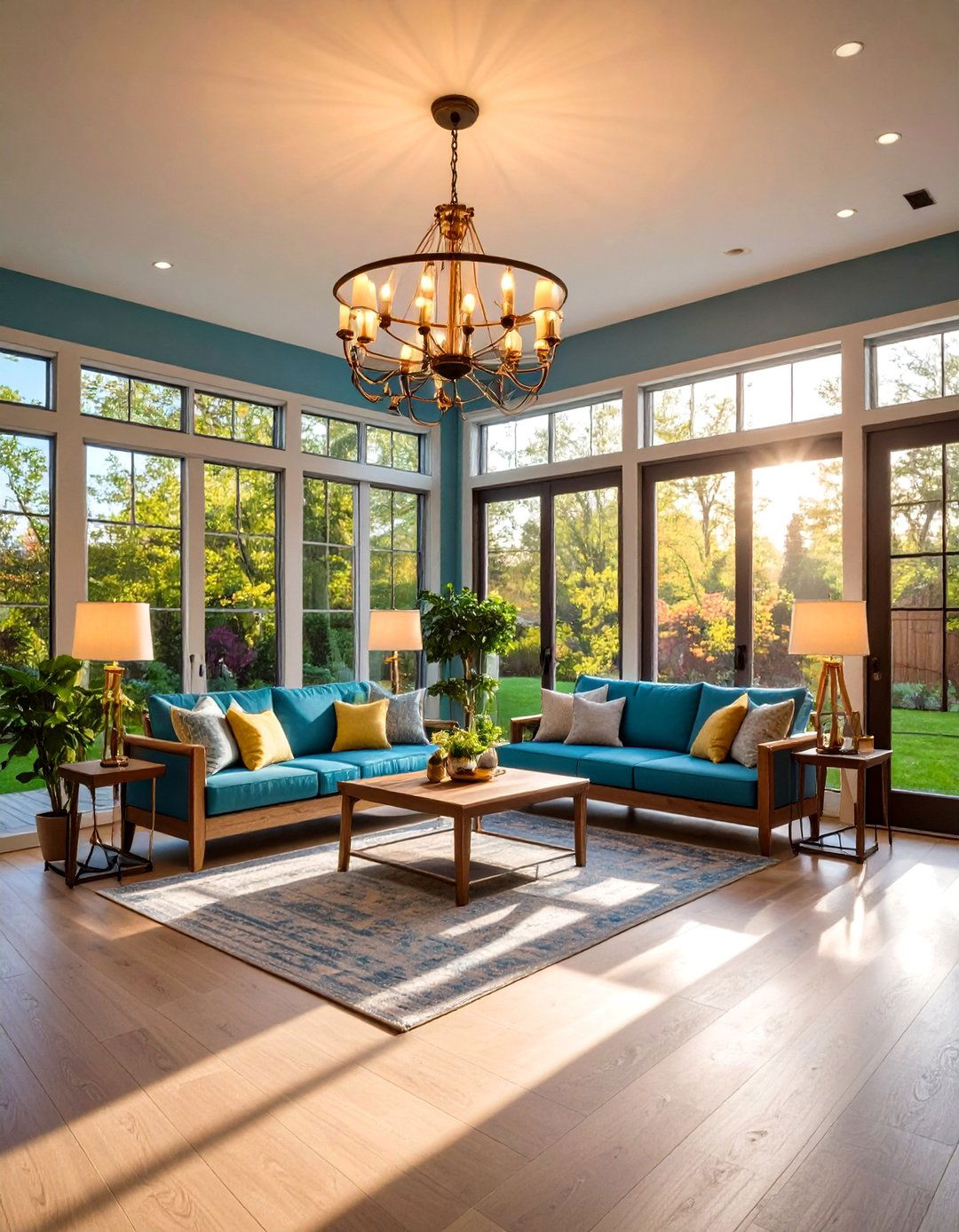
Combining ambient, task, and accent lighting ensures functionality and ambiance. Recessed ceiling lights provide general illumination, while a statement chandelier above the dining table acts as a focal point. Wall sconces or uplights accent architectural details and artwork. For tasks—like reading a menu or setting the table—consider adjustable floor lamps or tabletop lanterns. Smart bulbs or dimmers allow you to fine-tune brightness levels to suit the time of day and occasion.
18. Seasonal Decor Rotation
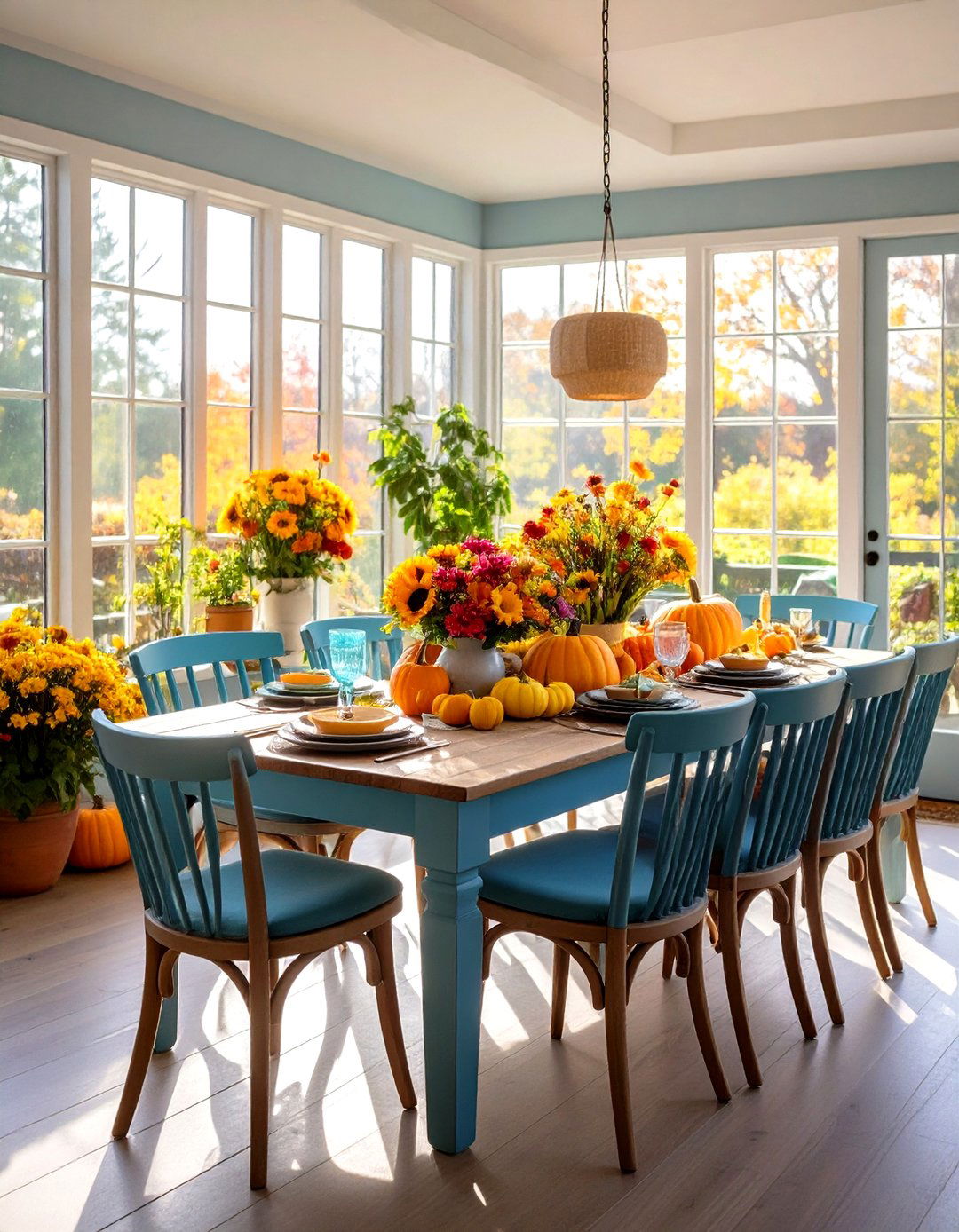
Refreshing your sunroom dining area with the seasons keeps it feeling dynamic. In spring, display fresh florals and pastel textiles; summer calls for light linens and coastal motifs. Autumn ushers in warm hues—like burnt orange and deep red—with pumpkin-inspired centerpieces. Winter décor can include evergreen wreaths, plaid throws, and pillar candles for a snug atmosphere. Store seasonal items in decorative baskets or trunks within the room for effortless transitions and to maintain a clutter-free environment.
19. Personalized Dining Accessories
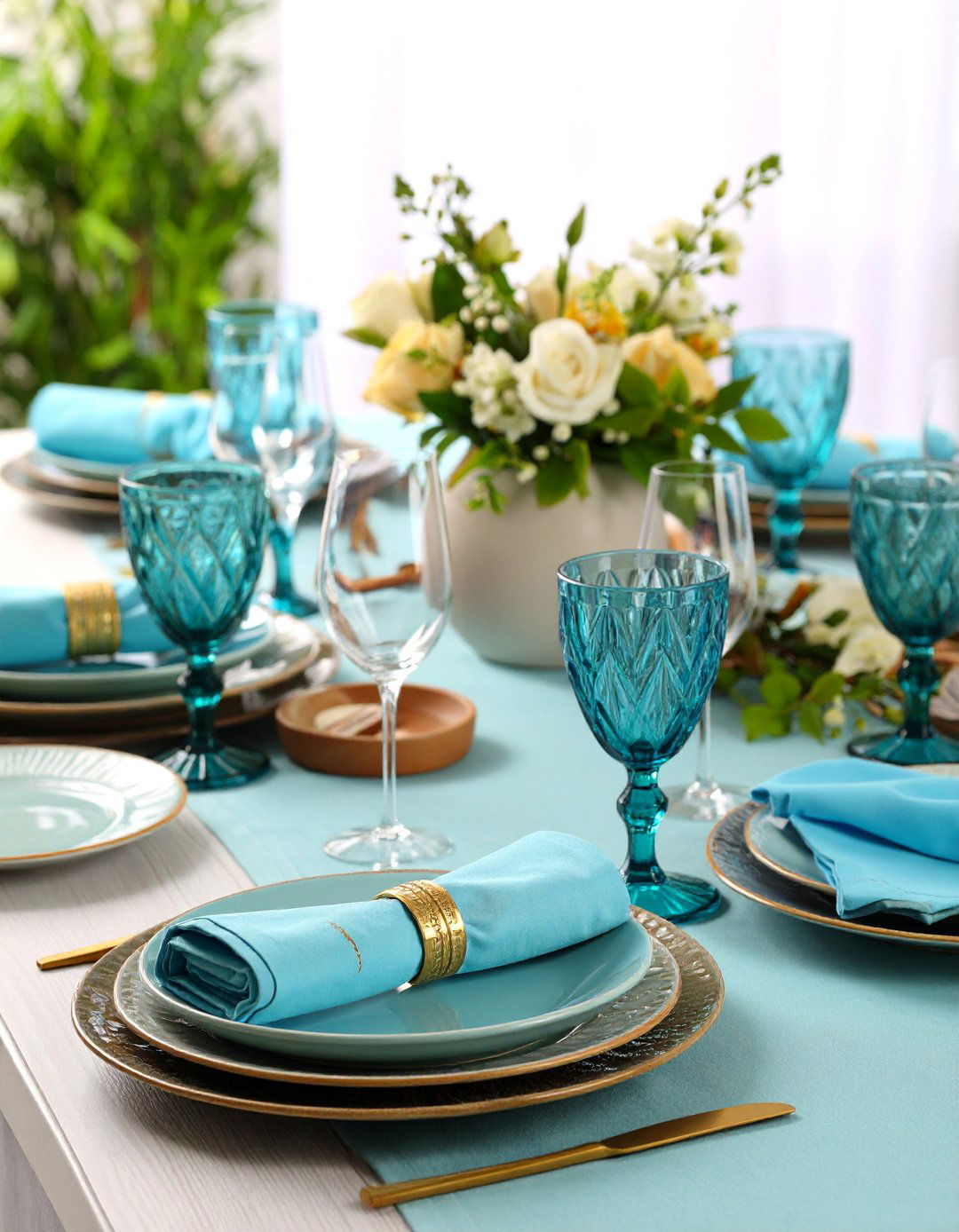
Customizing table settings elevates everyday meals into memorable experiences. Monogrammed napkins, hand-painted dinnerware, or etched glassware add a personal touch. Craft bespoke place cards or menu cards for special gatherings. Decorative chargers or table runners in unique fabrics highlight the dining table. Incorporate family heirlooms—such as vintage silverware or ceramic pitchers—to imbue the space with history and character. Personal mementos on display reinforce the intimate, lived-in feel of your sunroom dining room.
20. Art and Decorative Elements
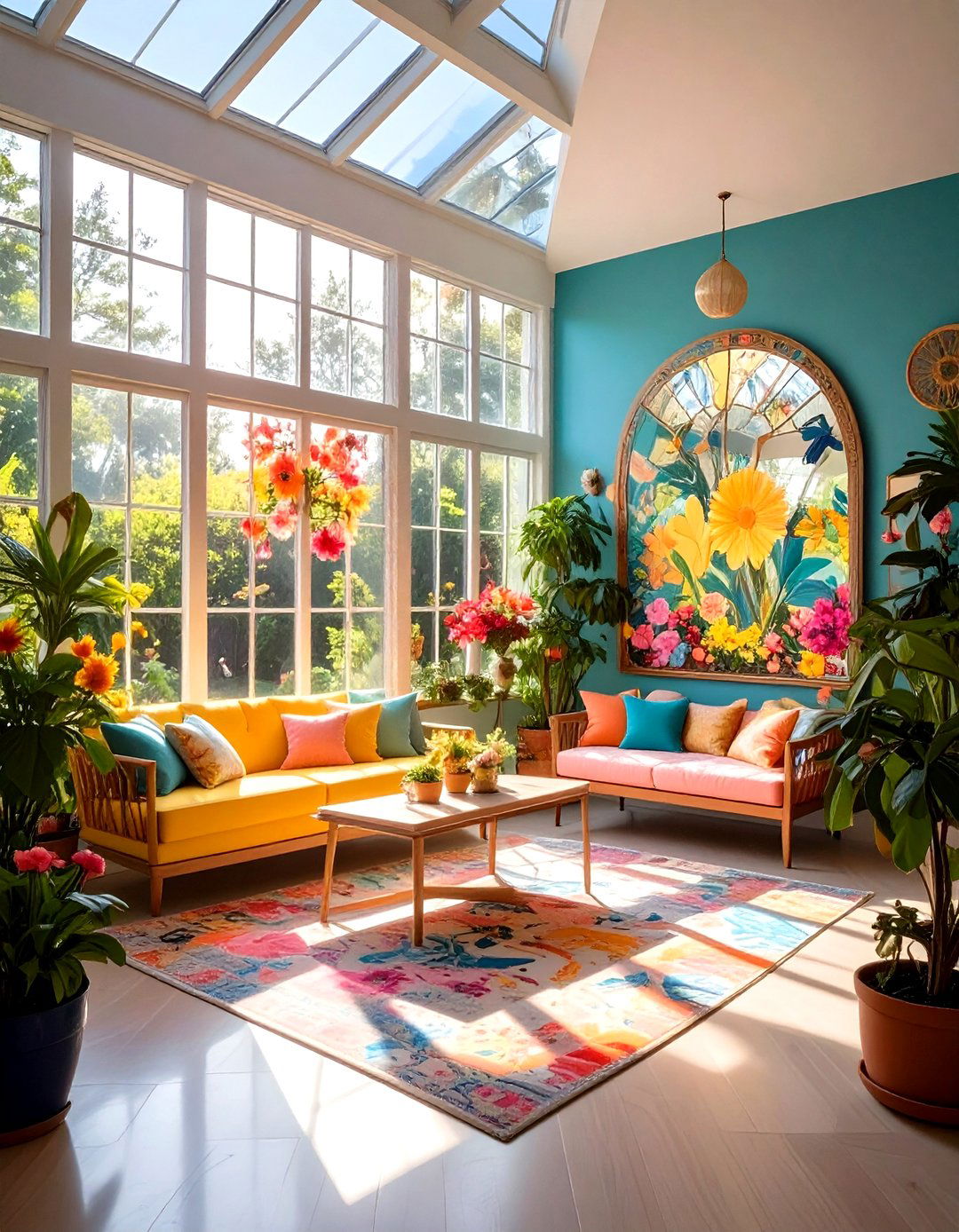
Strategic art placement enriches the décor without detracting from the view. Choose weather-resistant pieces or frame artworks behind UV-filtered glass to protect them from fading. Large-scale photographs or botanical prints reflect the natural theme, while sculptural wall installations add depth. A decorative mirror opposite a window amplifies light and expands perceived space. Incorporate floating shelves to display curated collections—like ceramics, books, or plants—that change with your evolving taste.
Conclusion:
Creating a sunroom dining room that balances style, comfort, and functionality involves thoughtful decisions about light, materials, and layout. By maximizing natural illumination, selecting durable yet attractive flooring, and blending indoor-outdoor elements, you set the stage for a versatile dining area. Layered lighting, seasonal décor, and personalized accents ensure the space feels welcoming and dynamic throughout the year. Whether you favor a rustic farmhouse look, a sleek modern aesthetic, or an eclectic bohemian flair, these ideas provide a roadmap to crafting a sunroom dining room tailored to your lifestyle and design sensibilities.


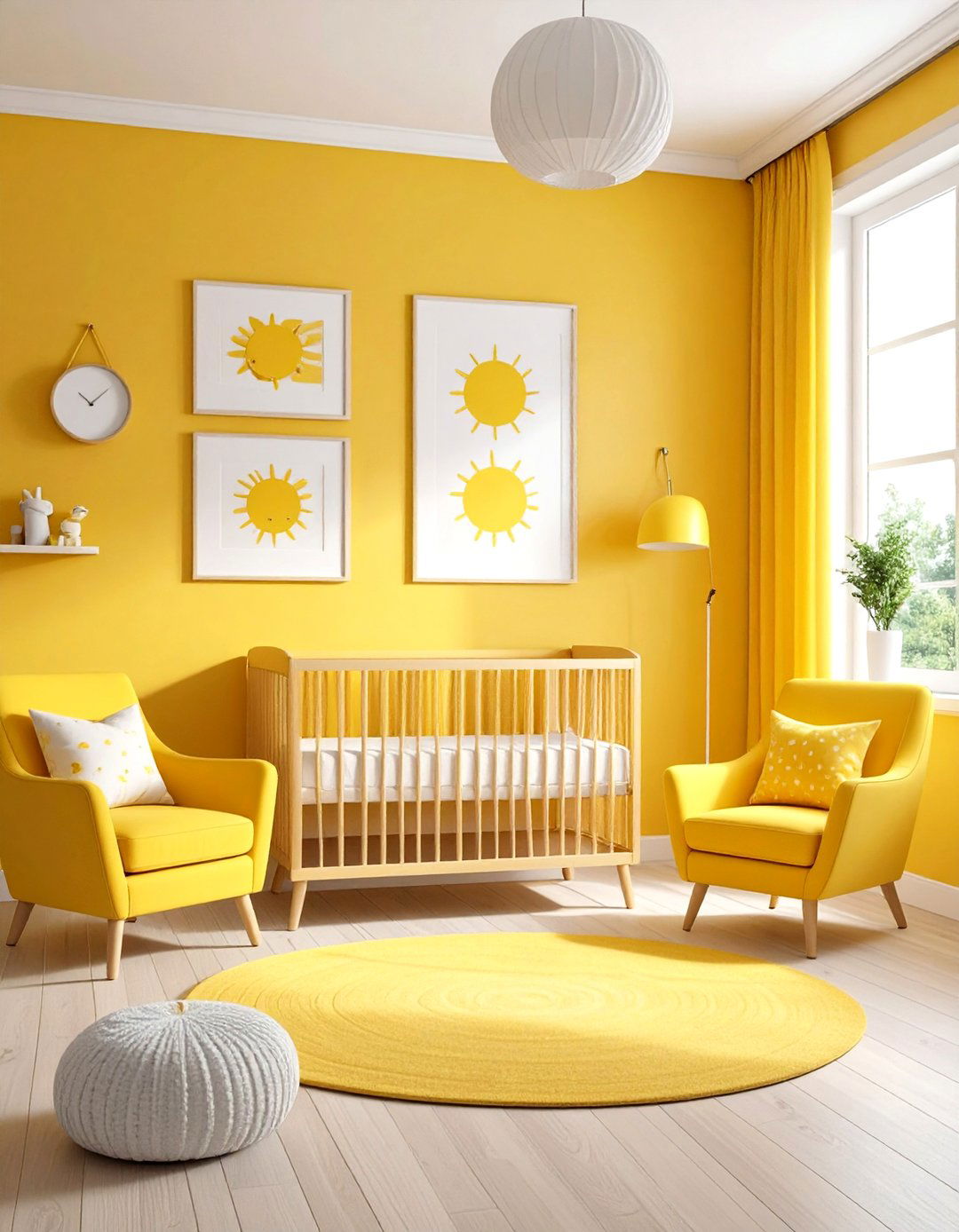
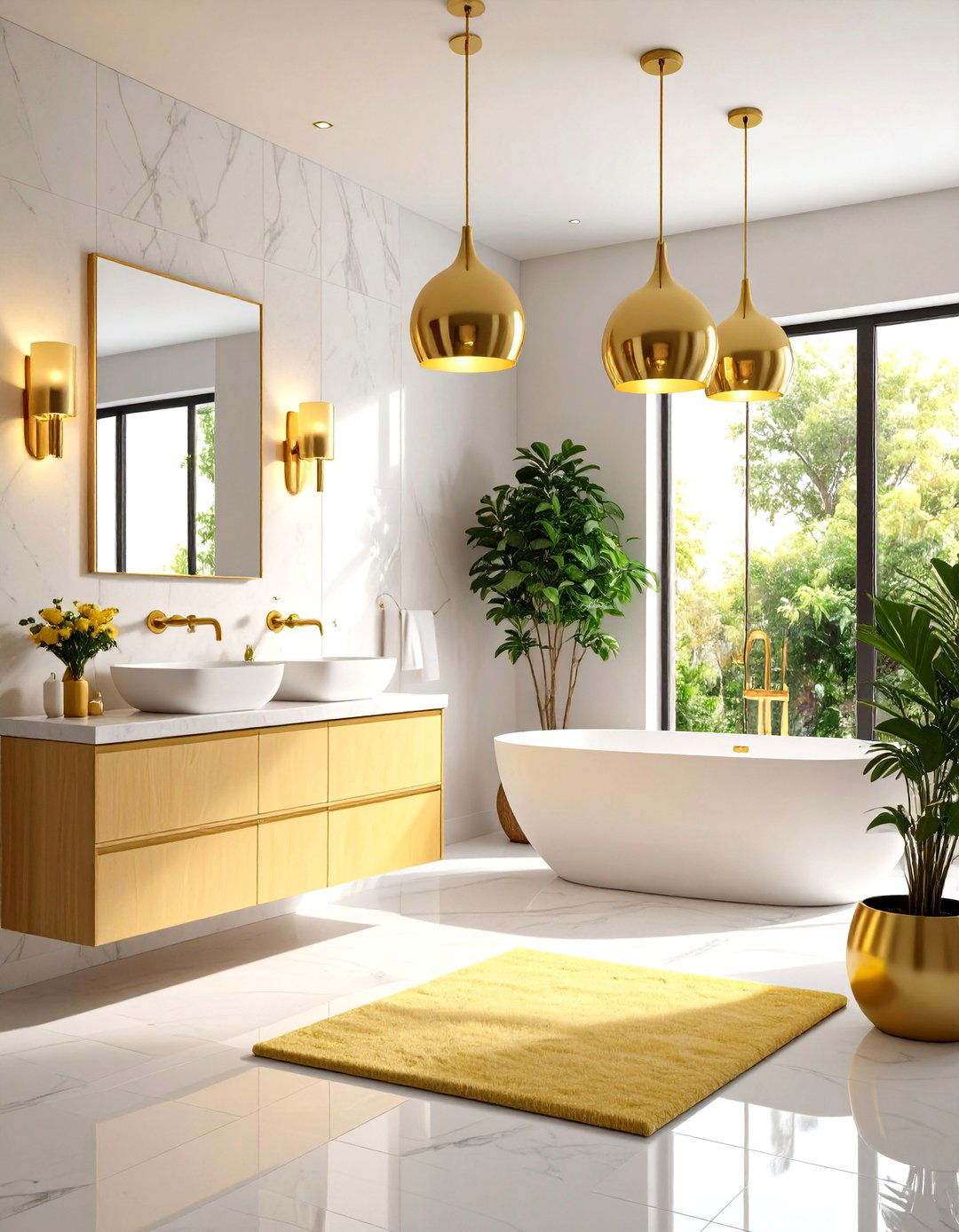
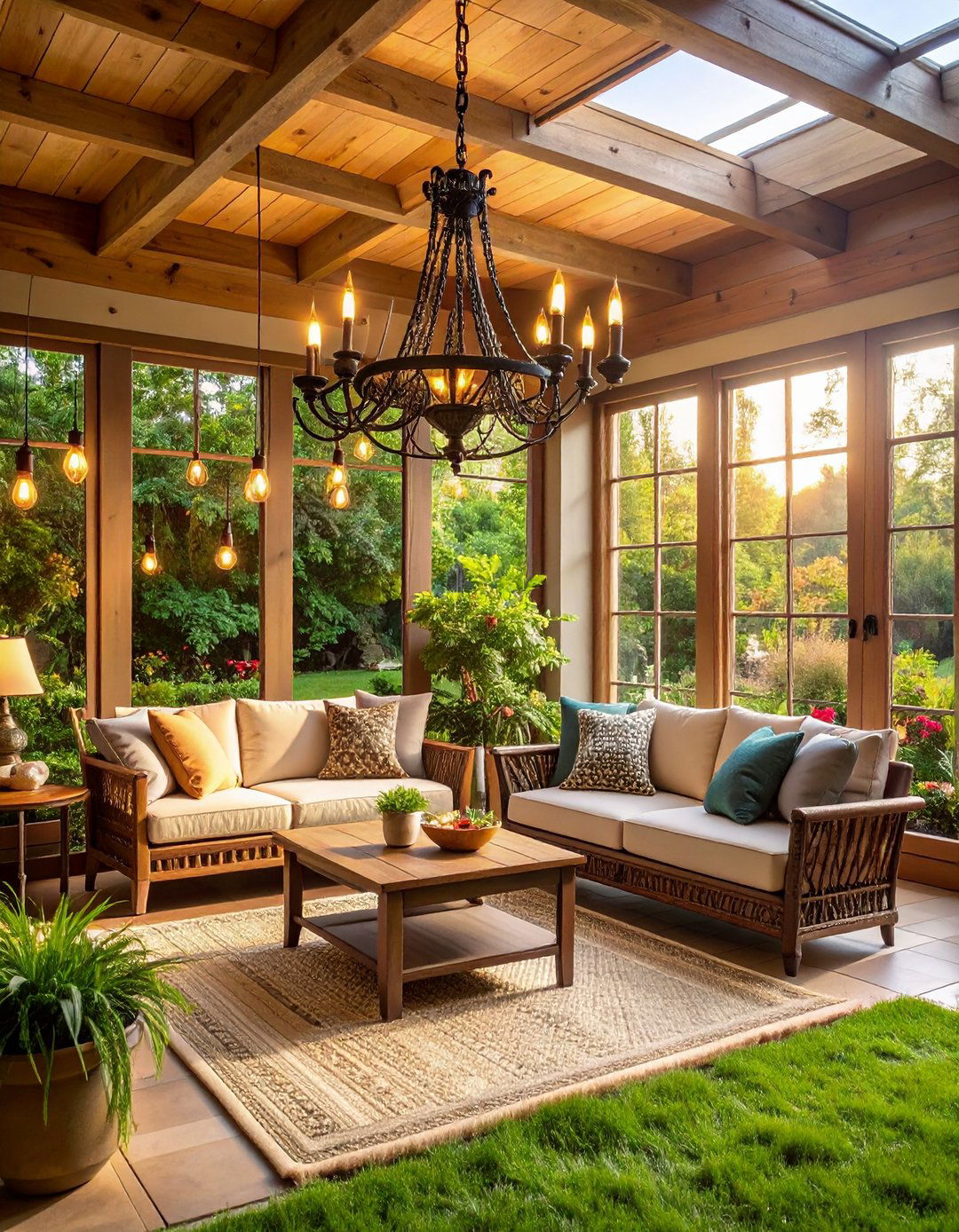

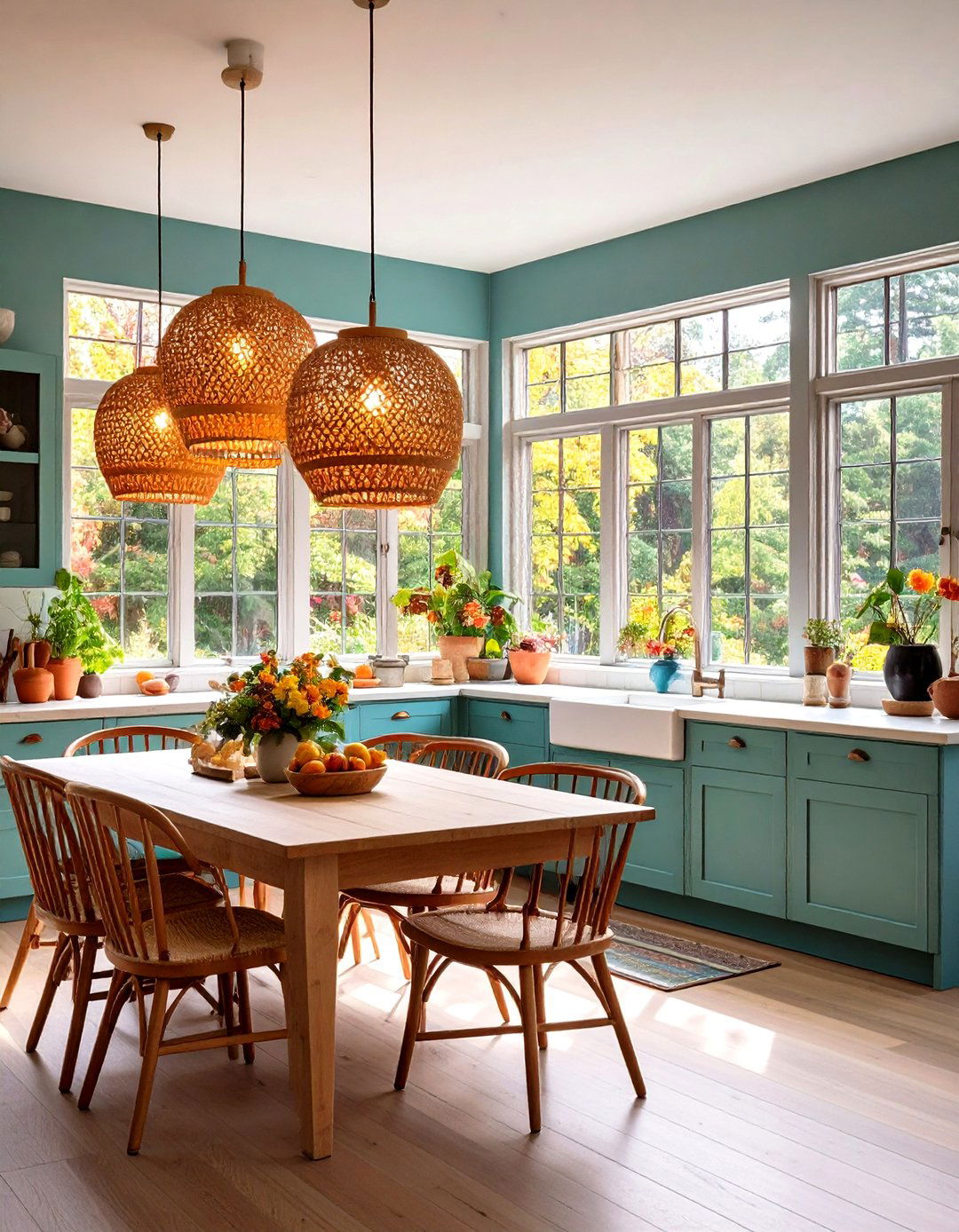
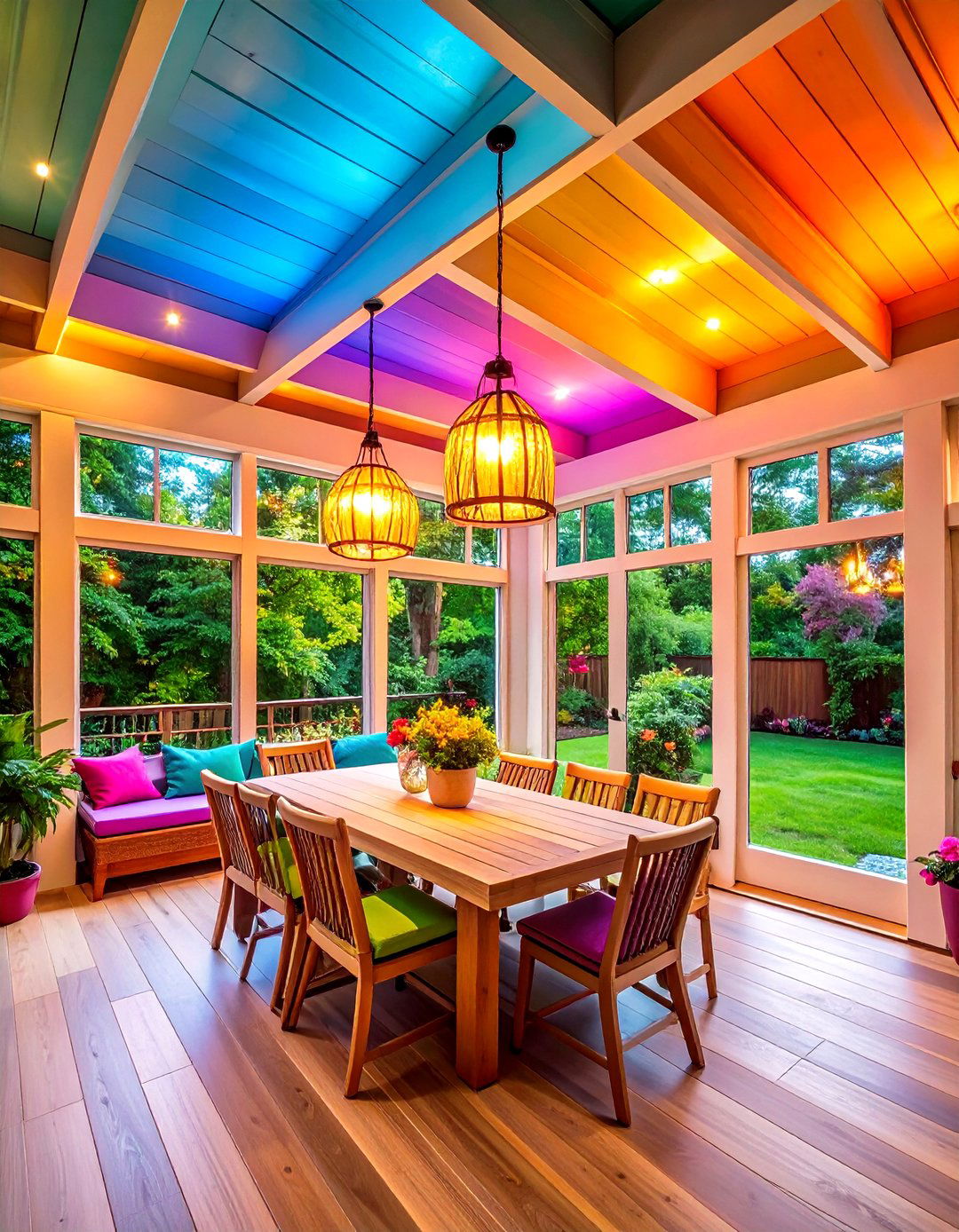
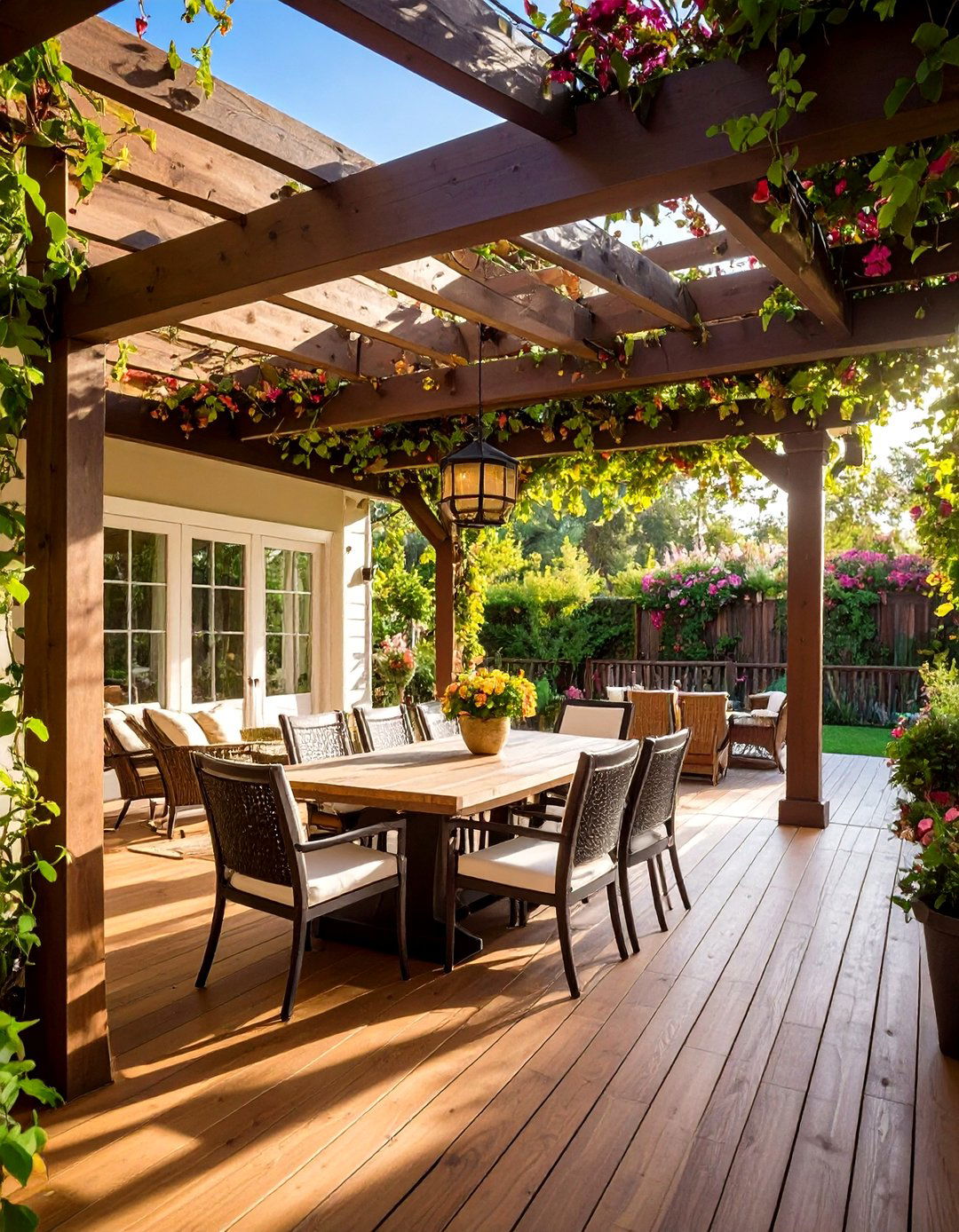
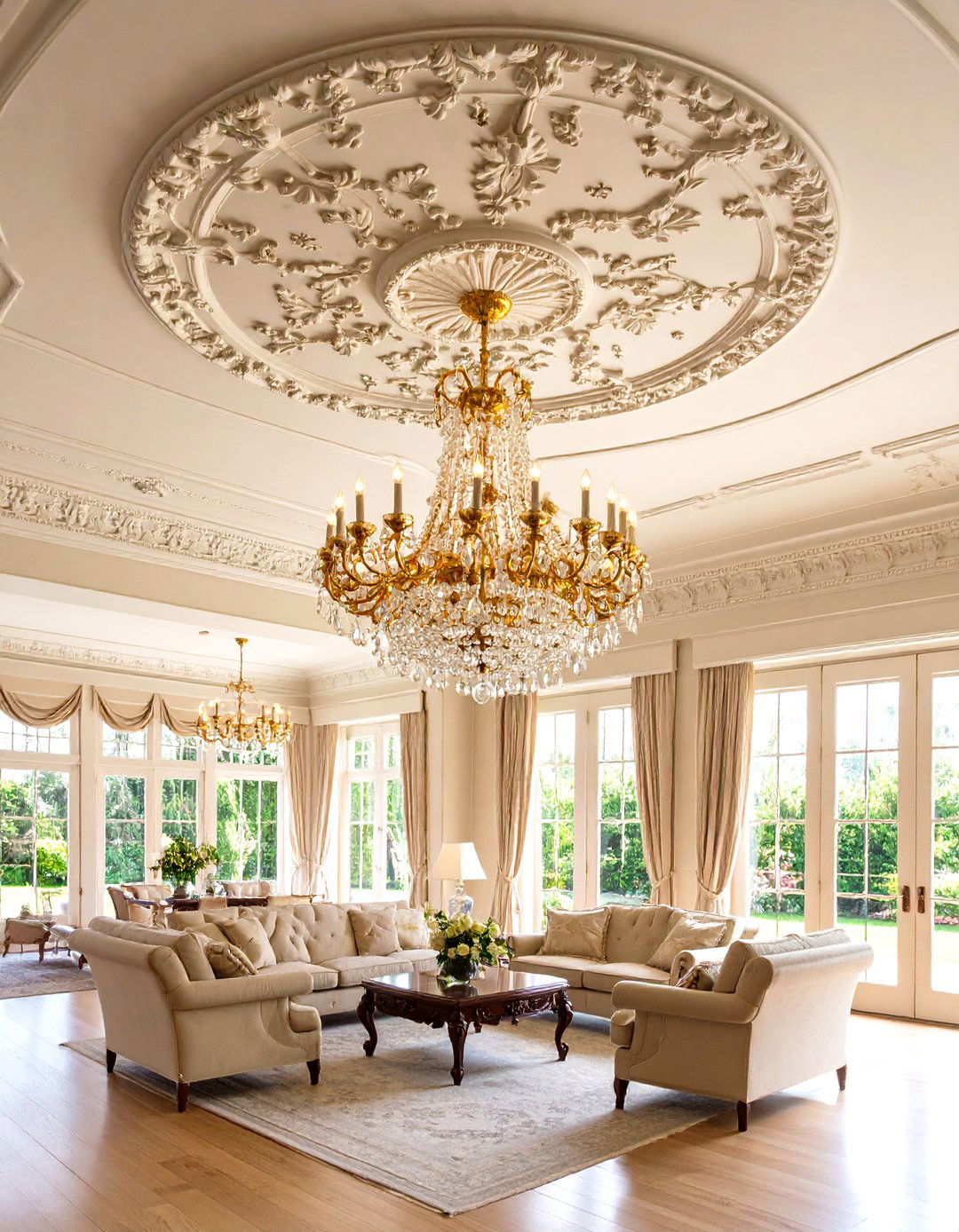


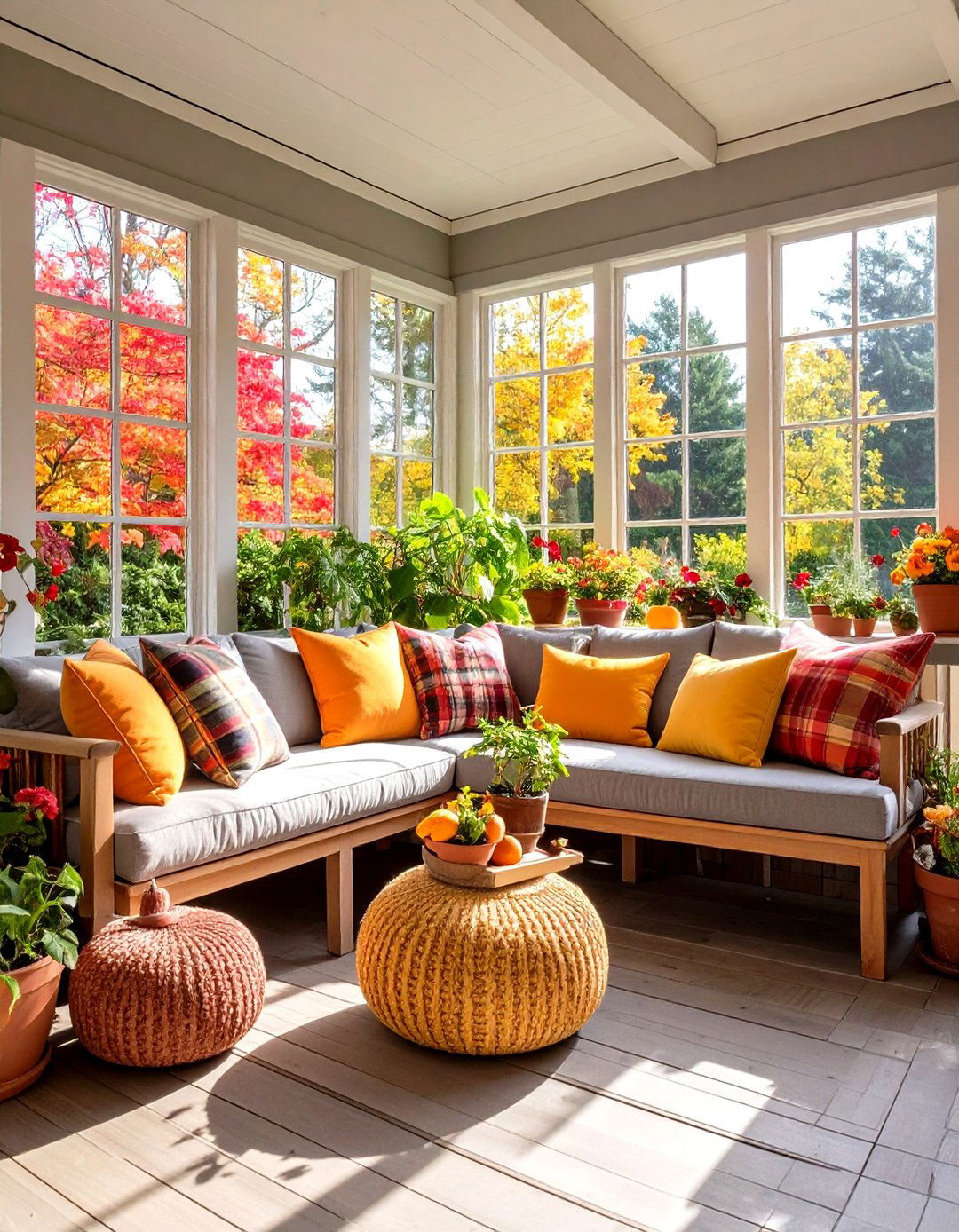
Leave a Reply